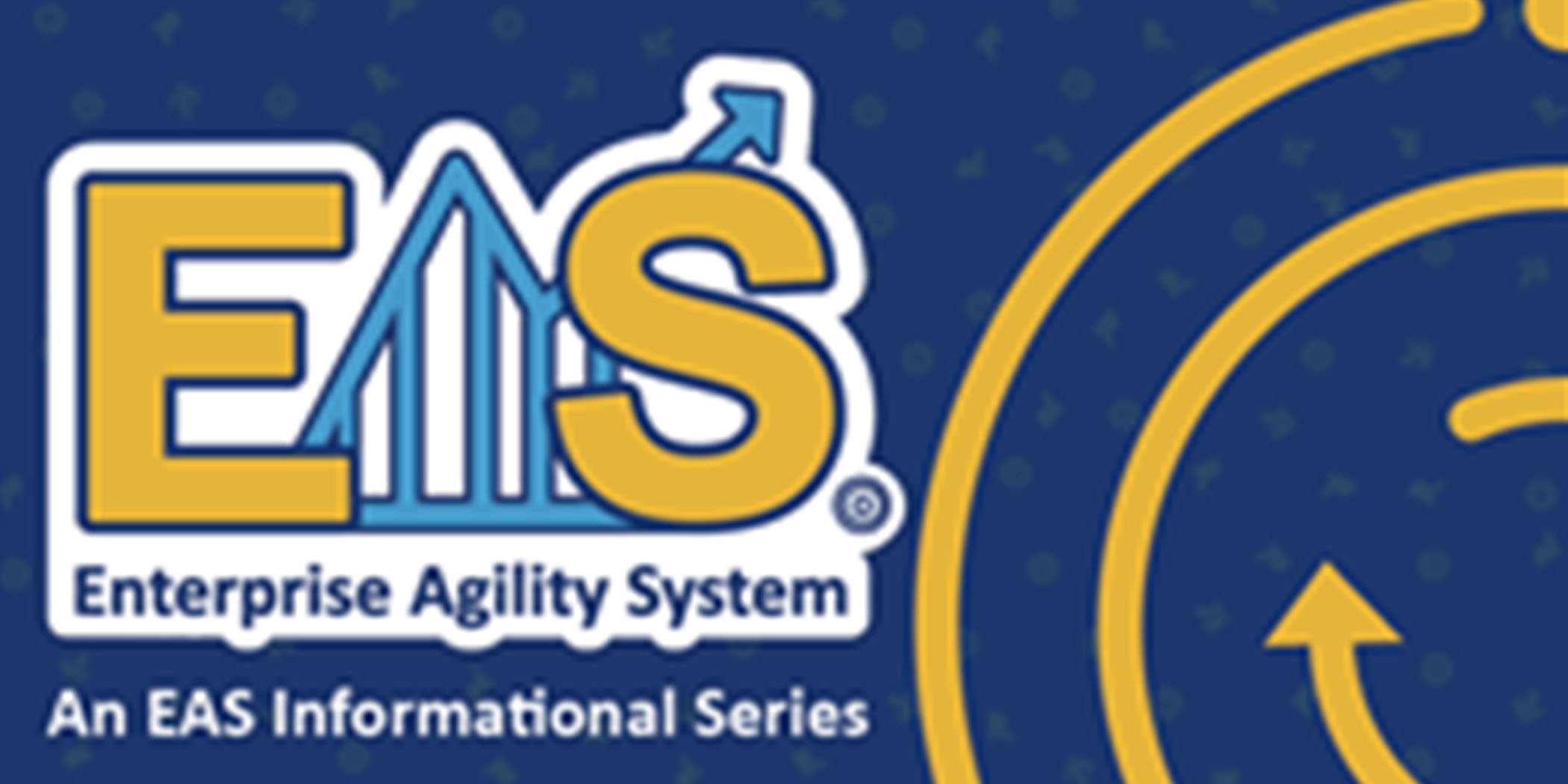
EAS Fundamentals
Published April 12, 2022
Learning terminology on any new project can be challenging. This month’s Enterprise Agility System (EAS) informational series article features key terms and phrases that are commonly used within the model. Understanding the terminology below will enable our business partners to navigate through the system of delivery more easily.
Agile is a work method and mindset that values flexibility and acceptance/ management of change as part of a system of continuous improvement. Adopting agile is about delivering better business outcomes.
An expedition is a grouping of teams (portfolio, product, and delivery teams) that make the EAS transformation journey together. It contains all the structural elements necessary to deliver business capabilities, coordinate and overcome dependencies, and make prioritization decisions and economic tradeoffs.
A basecamp is an intermediate state (unit of progress towards EAS maturity) in the model that allows the organization to measure progress against defined transformation and business outcomes, claim an intermediate victory, and set the stage for the next leg of our EAS journey.
A trek is a leg of the overall expedition journey from one basecamp to the next.
An epic is a business problem that needs a solution and contains products to be consumed by one or more business areas that cannot be completed in one iteration, usually measured in months. Epics are broken down into features (a segment of functionality measured in weeks), and features are further broken down into user stories (a small, self-contained unit of work), which maximizes delivery flow while addressing cross-cutting concerns and dependencies.
Value is the worth that an epic delivers to the business. In EAS, the quest to add value drives most team decisions. This value-based prioritization means the customer (the business) helps determine the business value their request delivers, and, when compared to other epics, drives the prioritization of the work.
Weighted shortest job first (WSJF) is a prioritization model used to sequence work in order to produce maximum value for the business. The measure for WSJF is estimated as the cost of delay (CoD) divided by job size. WSJF aligns to a central premise that prioritizing epics and sequencing work helps minimize the cost of delay to value being deployed.
For more information, visit the EAS website and lexicon on MyNNS.